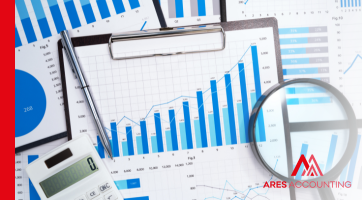Finance can be an intimidating subject for many, and even finance professionals can sometimes struggle to explain fundamental concepts. A trio of crucial concepts includes Assets, Liabilities, and Equity. These terms are at the core of financial understanding and are essential for both individuals and businesses. In this article, we will explore the definitions, impact on financial statements, and optimization strategies for Assets, Liabilities, and Equity.
Assets
Definition
Assets are the resources that a company owns or controls and can use to generate future economic benefits. These resources can take various forms, including tangible assets such as buildings and machinery, as well as intangible assets such as patents and trademarks. Assets are generally classified as current or non-current based on their ability to convert into cash within one year.
Impact on Financial Statements: On the balance sheet, Assets are listed and classified as current or non-current. The total amount of assets on the balance sheet represents the company’s resources at a specific point in time.
Four Ways to Optimize Assets
- Asset Efficiency: Maximize the use of assets to generate income by ensuring they are actively used and well-maintained.
- Asset Allocation: Evaluate the allocation of resources among different asset categories to optimize returns and manage risks.
- Asset Acquisition: Make informed decisions when acquiring new assets, considering factors such as cost, expected returns, and useful life.
- Asset Lifecycle Management: Implement a comprehensive asset lifecycle management strategy to ensure effective acquisition, use, maintenance, and disposal of assets.
Liabilities
Definition
Liabilities represent the obligations that a company owes to third parties, often involving the repayment of money, goods, or services. Like assets, liabilities can be classified as current or non-current based on their maturity.
Impact on Financial Statements: On the balance sheet, Liabilities are listed and classified as current or non-current. The total amount of liabilities on the balance sheet represents the company’s ongoing obligations at a specific point in time.
Four Ways to Optimize Liabilities
- Debt Management: Optimize the debt structure by assessing interest rates, maturities, and clauses to minimize costs and risks.
- Working Capital Management: Effectively manage working capital to ensure current liabilities can be honored without liquidity issues.
- Supplier Negotiations: Negotiate favorable terms with suppliers to extend payment periods and improve cash flow management.
- Debt Refinancing: Monitor market conditions and consider refinancing existing debt when interest rates are favorable.
Equity
Definition
Equity represents the residual interest in the company’s assets after deducting liabilities. It is the shareholders’ stake in the company and is also known as shareholders’ equity or net assets.
Impact on Financial Statements: On the balance sheet, equity is presented as the difference between total assets and total liabilities. Changes in equity are reflected in the statement of changes in equity, showing how equity has evolved due to different transactions.
Four Ways to Optimize Equity
- Capital Structure: Evaluate the company’s capital structure to determine the appropriate mix of equity and debt financing to optimize financial leverage.
- Dividend Policy: Develop a balanced dividend policy that aligns with the company’s financial goals and shareholder expectations.
- Retained Earnings: Consider retaining a portion of earnings as retained earnings to reinvest in the company and promote growth.
- Share Buybacks: Consider share buyback programs when the company’s shares are undervalued or when excess cash is available.
Equity, Assets, and Liabilities in Accounting
Let’s take a closer look at the concepts of Assets, Liabilities, and Equity. Assets are essentially the resources and possessions of a company, whether tangible (such as real estate and equipment) or intangible (such as patents and trademarks). They represent what the company owns and can use to generate future income. On the other hand, liabilities are the financial obligations and debts of the company to third parties, such as bank loans or unpaid bills. Finally, equity is the difference between assets and liabilities, essentially reflecting the net worth of the company. Equity is also the portion of the company owned by shareholders, meaning it’s their investment in the company. In summary, assets show what the company owns, liabilities indicate what it owes, and equity reflects the net value of the company after repaying all debts.
Understanding the concepts of Assets, Liabilities, and Equity is crucial for effective financial management. These concepts provide valuable insights into the financial health and performance of a company. By optimizing assets, liabilities, and equity, companies can enhance their financial stability, efficiency, and shareholder value. Whether you are a finance professional or just starting in the finance world, mastering these fundamental concepts is a significant step toward financial success. For more information, please contact us via email: support@ares-accounting.com.



Leave a Reply